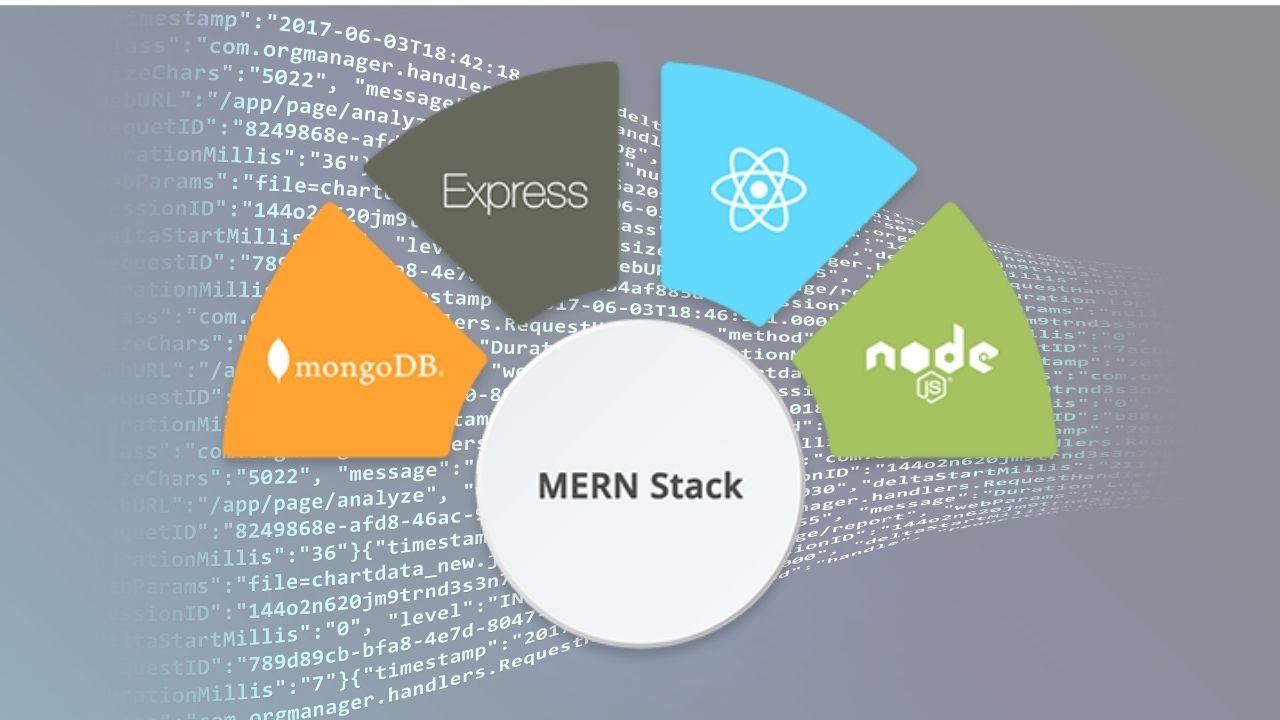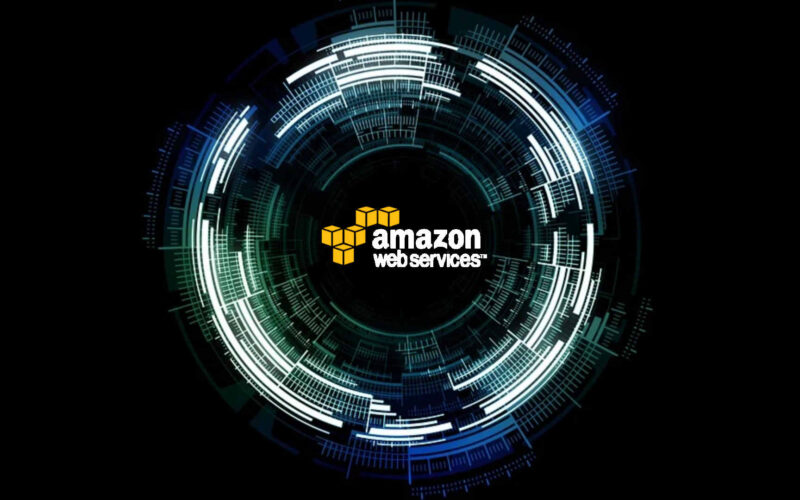MERN stack application development is mostly centered around ReactJs, NodeJs & MongoDB at the core. React has 154.4K GitHub stars & 30.3K GitHub forks. Node too boasts 72K GitHub stars. Companies like Uber, Slack, Coursera & Netflix use these technologies for building their customer-focused products. Of-course this could not justify choosing mern stack for your application but such humongous love & support does instills one’s trust in these technologies.

Let’s understand all the crucial factors involved in choosing the right tech stack.
What’s a right tech stack for any enterprise / business?
An important part of growing or scaling your business is iteratively improvising your product and services. In this process, often and mostly for good, your business mushrooms into a lot more than what was your initial idea while starting it.
So, it becomes very crucial, we would rather call it critical, to architect your business on very strong foundational pillars. One way to achieve this is by choosing the right futureproof technological stack to develop your applications.
A high-level description of the right tech stack for your business could be :
- a set of technologies which can efficiently support the present requirements of your business, as well as embrace the enhancements your business products or services may need in future to flourish.
Choosing the right tech stack
But in this ever-changing world, one cannot guess the forms and shapes in which your business may mould in future.
Then how shall we decide the right tech stack?
Maybe, by taking an inspiration from peer businesses? Or, how about taking an informed decision by educating ourselves about different tech stacks, its agility, efficiency, scalability prospects and how it aligns with our current needs?
Your Guide To Being A Digital First Business
– by Team Codewave
In this article, we shall do an in-depth analysis of MERN stack for SAAS web applications.
We would try to understand :
- Why MERN stack is so popular?
- What kind of businesses or startups should consider MERN stack to architect their product?
- What enterprise CXOs planning for digital transformation, should be aware about MERN stack?
MERN stack :

MERN stack, just like MEAN stack, is an amalgam of JavaScript technologies that work in tandem to enable businesses to move at a breakneck speed.
Why developers are in love with MERN?MERN stack is favourite among developers as it enables developers to easily transition into frontend application developer, backend application developer or full stack developer roles. This is possible because the constituent technologies are all JS based.
MEAN STACK DEVELOPMENT
Your guide to build scalable apps
Thus, learning curve becomes very easy. Additionally, it is open-source and as already quoted boasts a huge developer community.
We shall discuss soon how it benefits businesses and enterprises but first let’s understand the concepts related to the MERN tech stack.
So, first of all, what is a tech stack?
There are a lot of theories out there but, in general, we define Tech stack as :
- a bunch of technologies harnessed to work in sync with each other to get your application up and running.

In a layman’s language, consider the wheels in a four-wheeler automobile, the steering, the seats and the engine. These parts are manufactured independent of each other but are brought together to work simultaneously and get your car going on the road.
Similarly, in the case with any tech stack, including MERN stack, you bring in different technologies from the options available out there and blend them together i.e., make them work together cohesively to build an application or a feature.
Why choosing the stack is crucial?

As a car manufacturing business owner, one needs to take care of certain things to ensure that the car is a success in the market. They need to care about its performance, as well as appearance among many other things.
Now, without diving deeper into the automobile mechanics and industry, we know a good automobile is known for its horsepower and mileage, as well as aesthetic appearance.
Similar is the case in the world of digital business. You need to care about :
- Performance of your digital applications,
- User Interface and experience,
- Cost optimization etc.,
But, the digital world is different from the automobile industry in a lot of ways, especially the pace at which things and trends change in the IT sector.
As a tech CXO, executives like you are always concerned about memory utilisation and performance etc.,. Parallelly, some business executives might also be worried about expansion and market share.
Given the speed at which trends evolve, appear, disappear and the impact it leaves on your business, an executive cannot be blamed if he holds an opinion similar to :
- “there will always be time to improvise memory utilisation and performance of your application for specific features but not time to gain market share, acquire or retain customers.”
And this is true. We see it happening all the time, from Altavista vs Yahoomail vs Gmail story to AWS vs AZURE vs GCP.
We have seen how almost all social media players rushed in to integrate stories feature in there applications and platform when Snapchat found it a massive success and hit amongst youngsters.
We are seeing it happening with AR effects in micro-vlogging platforms, UPI payment features in financial applications, e-scooter apps in the automobile two wheeler industry and so on.
How do you make sure that you do not lose potential customers?

Stay ahead in the game. And that is what MERN stack enables you to do. It helps you quickly build marketable new features with amazing user experience and user interface without sacrificing performance.
In short, time to market for a new feature or application is significantly reduced. And, possibilities of acquiring or retaining customers increases.
Design Thinking – why it matters?
Stay ahead of your competitors
Also, the community around MERN stack is so big that you would easily find developers and MERN Application Development companies to accelerate your business growth. Of-course, experience and domain expertise matters and that’s why at codewave we’ve been hustling for close to a decade and helping businesses and enterprises thrive.
Let’s take a sneak peek in the technicalities of MERN stack technologies –
MERN is an acronym which stands for it’s constituent technologies, namely, MongoDB, Express JS, React JS and Node JS. Now, when we say use MERN stack, it doesn’t mean you are only confined to these four technologies.
There is an overwhelming pool of technologies and libraries you can use alongside these to make your application and deliver an awe-inspiring user experience to your customers. We shall first explore reactJS and then we will look into the other technologies.
Coding warriors would often fight about which framework or library is better. MERN vs MEAN, Javascript vs Python and what not. For now, we’ll avoid getting into that, as the best stack is what yields best results for your business. We shall soon compare them in another insight-post.
How would you know which technology may yield best results for your business?
The decision-making here is really daunting. What’s more? The plethora of options you have, be it frameworks and libraries or low code environments, makes it harder to decide your stack.
Again, that’s where codewave ninjas and their close to a decade-long experience with various technologies can help you out and consult you in taking an informed and right decision.
React JS
React JS, unlike angular, is not a framework. It is a JavaScript library. So, when you use react, you are not confined to work within the limits of a framework. Instead, you are a free bird. The sky belongs to you. You’ve flexibility to add whatever feathers, we mean features, you want to add in your application to make it more appealing to users.
Talking about birds reminds us of another very powerful technology, FLUTTER, do read our insight on flutter and compare it with react’s cousin ReactNative for building mobile applications.
One-way data binding (data flow in one direction):
This is one of the reasons why, despite being younger to peer frameworks and libraries, React JS has a lot more forks compared to others on github. Before getting into one-way, two-way, my-way or high-way data binding, let’s understand what is data binding?
In a layman’s terminology, what is visible on a website is made up of elements, also called components. For example, buttons, navigation panel, comment box, input box etc.,
And when we interact with these elements, we are exchanging information in some way or the other. Like, clicking on a login button by providing your identity credentials, you are communicating with it and exchanging data with the server, as well as communicating indirectly with the database via servers. Now, in the programming world the process of associating this information you provided with those visible components is called data binding.
So, your application remembers which data is connected to which element through a data binding feature.
Now, react is built upon the concept of unidirectional data flow. Which means data is stored in States (owned by parent components) and it goes to child components through props. This flow of data is just one-way. Child components are not allowed to mutate state data, neither are they allowed to have a state of their own.
Two way data flow synchronises the view and the model i.e., changes both if either changes. Which might sound like a good thing but it is a pain for developers to debug when error happens due to a bug. As multiple views could be associated with multiple models and a change in one could trigger change in others, this could become complex at times to debug and control what elements affect whom.
Now, because user interface view and model implementation in react JS is unidirectional, it means view always gets its state from model and so if view needs to be updated, first update the model. As soon as you update the model state it triggers reactDOM’’s render. React has a virtual-Dom memory and it compares new state-triggered changes in UI views and updates them accordingly.
When you are using react-redux, You dispatch actions to update store (single-source of truth) and accordingly view updates.
The benefit is your developers are always aware about what is triggering a specific change in the view and can pinpoint any bugs that arise. It must be obvious by now, that this implementation of data flow brings in a lot of comfort for developers.
Let’s list out benefits of react JS stemming from this approach:
- Easy debugging :
Developers are aware about data flow and its ripple effect on other components.
- High-performance.
Because state triggered view changes are updated by comparing virtual-Dom stored in-memory.
- Code reusability.
Reactjs components are highly reusable and this contributes to high performance too, as it is easier to implement best practices. Also, this boosts up developer productivity.
React code is also re-usable in mobile development if you use react-native for your cross-platform mobile app development.
- Easy testing maintenance and optimisation.
As already mentioned because of code reusability it becomes a breeze for developers to maintain the code and optimise it for performance. Writing tests for a component or feature becomes very easy.
- Next JS and server-side rendering with react.
React JS runs on the client side but using next.js it can also render applications on the server side. Nextjs imparts code splitting, lazy loading and hot reloading support features to react applications.
Now let’s understand the features associated with the remaining technologies of MERN stack.
Mongo DB
It is a noSQL document object model database. MongoDB uses JSON or BSON documents to store data. This makes mongoDB highly favorable to be used with JavaScript libraries and frameworks including react js, angular js and vue js.
By document object model we mean data is not stored in rows and columns like in traditional databases. Instead it is stored in the form of documents inside a collection. For example, if you have a school database there can be a students collection, teachers collection, staff collection etc.,
Inside these collections, there could be documents containing details of individual students, teachers and staff etc., respectively.
So SQL world database developers could consider collections to be synonymous with table and documents to be synonymous with rows and documents fields are like my SQL columns. Each document can have a varying number and type of files and each collection can have any number of documents.
So, mongoDB becomes highly flexible, dynamic and scalable. MongoDB Is good for applications like E-Commerce, CMS, real-time analytics, geospatial applications, social networking sites and several others.
MongoDB is not that suited for highly transactional systems.
Express JS
ExpressJS is a lightweight JavaScript open source framework for nodejs. It speeds up the process of building web applications and manages routing sessions, http requests, authentications, error-handling etc.,.
It helps organise your web applications into an MVC architecture on the server-side. More on express will be explained in a dedicated article. For now just remember it is asynchronous, single threaded, fast and helps in building robust API and applications.
Node JS
Nodejs is built upon chrome’s JavaScript engine. It is a runtime environment to execute JavaScript code on server, primarily used for non blocking input/output (I/O) asynchronous request handling, event-driven servers.
What do you mean by non blocking input output and asynchronous request handling? Synchronous request handling blocks one thread for each request. Thus, making others wait until all the resources required for the request to be executed is available.
Whereas asynchronous request handling does not wait for resources and is also called non-blocking request handling. This makes nodeJS ridiculously fast.
Node JS is suitable for applications where frequent communication between the server and client is required in real-time. Like, video streaming applications, gaming apps, chat applications, finance applications and so on. It is suited for marking microservices architecture.
Some of the most popular companies in the world are using either the entire MERN stack or partially the constituent technologies. Big names include Netflix, Paypal, Walmart and Uber.
With this we would conclude the insight. Again, to decide what is best suited for your business, feel free to strike a conversation with our consultants at hello@codewave.com.
Frequently Asked Questions(FAQs)
1. What is the MERN stack and how can it be used for SaaS app development?
The MERN stack is a combination of technologies used for building web applications. It includes MongoDB, Express.js, React.js, and Node.js. These technologies work together to provide a full-stack solution for web development. MERN can be used for SaaS app development as it allows for the creation of efficient and scalable web applications. With MongoDB as the database, Express.js for the backend, React.js for the frontend, and Node.js as the runtime environment, developers can build a complete web application with MERN stack.
2. What are the benefits of using the MERN stack for building a SaaS application?
The MERN stack offers several benefits for building a SaaS application. Firstly, all the technologies in the stack are JavaScript-based, which means that a single language can be used for both frontend and backend development, making it easier for developers to work with. Additionally, the stack is open-source, which means it is free to use and has a large community of developers constantly updating and improving it. The MERN stack also allows for easy scalability, which is important for SaaS applications that may need to handle large amounts of data and user traffic. Furthermore, React.js can be used to build really awesome user interface, making the overall application more user-friendly and easy to navigate.
3. Can the MERN stack handle large-scale SaaS app development projects?
Yes, the MERN stack can handle large-scale SaaS app development projects. MongoDB, a key component of the MERN stack, is a highly scalable NoSQL database that can handle large amounts of data and high traffic. Express.js and Node.js, the backend technologies of the MERN stack, also have the ability to handle high traffic and large amounts of data. React.js, the frontend technology, is also highly scalable and can handle complex user interfaces and interactions. Furthermore, the MERN stack is highly modular and allows for easy integration of other technologies and third-party tools, further increasing its scalability. Overall, the MERN stack is a robust and flexible technology stack that can handle large-scale SaaS app development projects.
4. Are there any limitations to using the MERN stack for SaaS app development?
There are some limitations to using the MERN stack for SaaS app development. Firstly, MongoDB, which is a key component of the MERN stack, is a NoSQL database and may not be suitable for all types of data storage. Additionally, as React.js only deals with the view layer, if you want to use another JavaScript framework for the same, it might cause some compatibility issues. Another limitation is that, as the MERN stack uses JavaScript throughout, it might not be suitable for developers who are more comfortable working with other languages.








